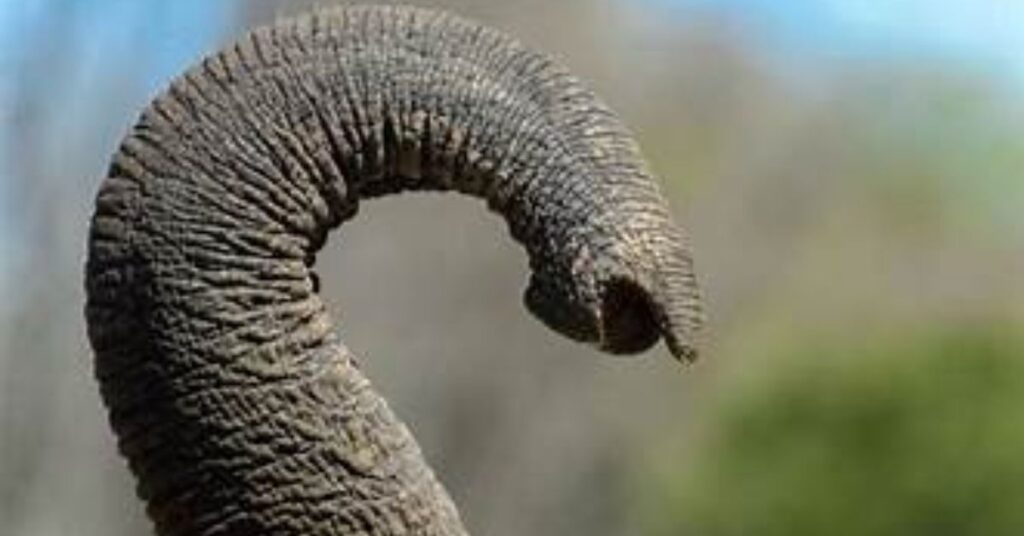Have you ever looked at an elephant and marveled at its extraordinary trunk? This versatile body part is more than just a nose—it’s a tool, a straw, a lifeline, and a form of communication. But how did it evolve to be so multifunctional, and what makes it so powerful? Let’s dive into the intriguing anatomy and capabilities of the elephant trunk, uncovering its crucial role in the life of one of the most iconic animals on Earth.
What is the Elephant Trunk?
The elephant trunk, scientifically known as the proboscis, is a remarkable muscular structure that extends from an elephant’s upper lip and nose. The trunk is not just an extension but a vital, flexible body part that serves multiple purposes. It can be used to smell, touch, grasp, feed, and communicate—functions achieved due to the incredible strength and dexterity of its structure.
The Anatomy of the Elephant Trunk
The elephant trunk is an anatomical marvel. While it may appear as a simple elongated nose, the trunk is highly complex and consists of approximately 40,000 muscles. In contrast, the human body has about 600 muscles, illustrating just how specialized and intricate the elephant trunk truly is.
Unlike human muscles that are connected to bones, the muscles in an elephant’s trunk are structured as bands, allowing flexibility and movement in all directions. These muscles are divided into two main groups:
- Longitudinal Muscles: Running along the trunk’s length, these muscles help the elephant extend its trunk and lift objects.
- Radial Muscles: Positioned around the trunk, these muscles aid in compressing and narrowing the trunk, helping the elephant to grab or squeeze.
This complex muscle structure allows elephants to lift weights up to 600 pounds, reach high branches, and perform delicate tasks like picking up a single blade of grass.
The Function of the Elephant Trunk in Everyday Life
An elephant’s trunk is integral to its survival. Its functionality is extensive, encompassing roles that range from eating and drinking to expressing emotions and social interactions. Here’s a look at some of the primary functions of the elephant trunk:
1. Feeding and Drinking
Elephants rely on their trunks to gather food and water. The trunk acts as both a hand and a straw. Elephants use their trunks to gather leaves, grasses, fruits, and bark, curling it around food items and bringing them to their mouths. For drinking, they draw water into their trunks (about 8-10 liters at a time) and then squirt it into their mouths. The trunk’s length allows elephants to access resources in environments where other animals may struggle, making it an invaluable adaptation for survival.
2. Breathing and Scent Detection
The elephant trunk plays a vital role in breathing and scent detection. Elephants are known for their extraordinary sense of smell, one of the most acute in the animal kingdom. They use their trunks to detect scents from miles away, helping them locate water sources, identify food, and recognize the scent of other animals or fellow elephants. The trunk’s ability to smell aids in navigation, social interaction, and even mating.
3. Social Communication and Bonding
Elephants are social animals, and their trunks are essential tools for communication and bonding within their herds. By intertwining trunks or gently touching each other, elephants show affection, comfort, and reassurance. The trunk also serves as a tool for displaying emotions, such as excitement, distress, or anger, helping them maintain complex social bonds that are vital for herd dynamics.
4. Self-Defense and Protection
While elephants are generally gentle giants, they can use their trunks in defense if threatened. Elephants can use their trunks to grab objects, break branches, or even throw dirt as a means of self-defense against predators or rivals. The trunk’s strength, combined with an elephant’s size, makes them a formidable force in the wild.
How Do Elephants Use Their Trunks to Interact with Their Environment?
Elephants live in a variety of habitats, from savannas to forests, and their trunks enable them to adapt to these diverse environments. The trunk’s flexibility allows elephants to reach high branches in forests, push through dense vegetation, or explore unfamiliar surroundings.
They also use their trunks to perform tasks that might surprise us. For instance:
- Dust Bathing: Elephants use their trunks to scoop dust or mud and throw it over their backs, helping protect their skin from sunburn and parasites.
- Water Spraying: In hot climates, elephants use their trunks to spray water over themselves, cooling down their bodies and avoiding overheating.
How Did the Elephant Trunk Evolve to Be So Versatile?
The evolution of the elephant trunk is closely tied to the elephant’s ancestors and their adaptations for survival. Fossil records suggest that ancient proboscideans (the order of mammals that includes elephants) evolved trunks as a response to changing climates and environmental needs. The development of such a structure helped these animals reach resources that were inaccessible to other herbivores, giving them an evolutionary advantage in diverse habitats. Over millions of years, this simple appendage transformed into the complex trunk we see today.
How Does the Elephant Trunk Compare to the Anatomy of Other Animals?
The elephant trunk is often compared to similar structures in other animals, such as the giraffe’s neck or the proboscis of certain insects. However, the elephant trunk is uniquely specialized. Unlike other animals that have elongated structures, such as the anteater’s snout or the proboscis of a mosquito, the elephant’s trunk serves as a multipurpose tool and sensory organ.
The Role of the Elephant Trunk in Conservation and Research
The elephant trunk is more than an anatomical wonder; it’s a symbol of biodiversity and conservation. Understanding the trunk’s function helps researchers gain insights into elephant behavior, social structure, and environmental needs. By studying the trunk’s capabilities, scientists can better develop conservation strategies to protect these magnificent animals in the wild.
For example, the trunk plays a role in research efforts related to climate change adaptation. As their habitats change, elephants rely on their trunks to forage for scarce resources, find water, and even dig for minerals. Conservationists studying trunk use patterns are better able to assess the needs of elephants as they adapt to new challenges.
The Future of Elephant Conservation: Protecting the Trunk and Its Many Functions
Elephants face numerous threats from habitat loss, poaching, and climate change. The loss of elephants would mean losing one of nature’s most remarkable adaptations: the elephant trunk. Conservation efforts around the world, including habitat protection, anti-poaching laws, and public awareness campaigns, aim to protect these creatures and their unique anatomical traits.
Conclusion:
The elephant trunk is more than just a body part—it’s a testament to evolution, adaptability, and survival. By examining the anatomy and functionality of the elephant trunk, we gain a deeper understanding of these majestic animals and their role in the ecosystem. The trunk’s versatility, from its role in feeding to its function in social bonding, makes it one of nature’s most extraordinary creations.
As we continue to learn from these remarkable animals, it becomes increasingly important to support conservation efforts that ensure elephants can thrive in their natural habitats for generations to come. Protecting the elephant trunk means preserving a crucial element of biodiversity and honoring the resilience of one of nature’s most iconic species.







